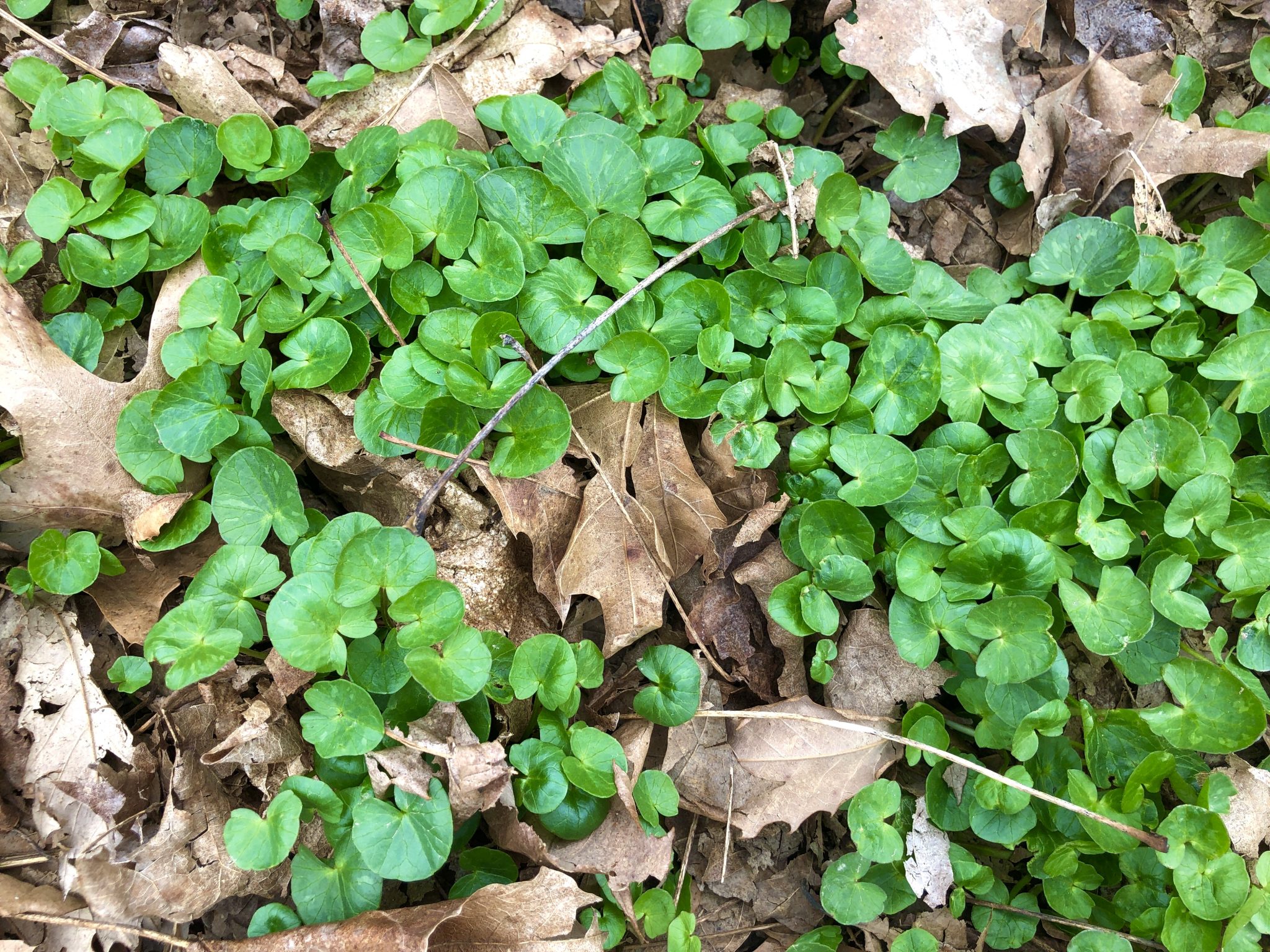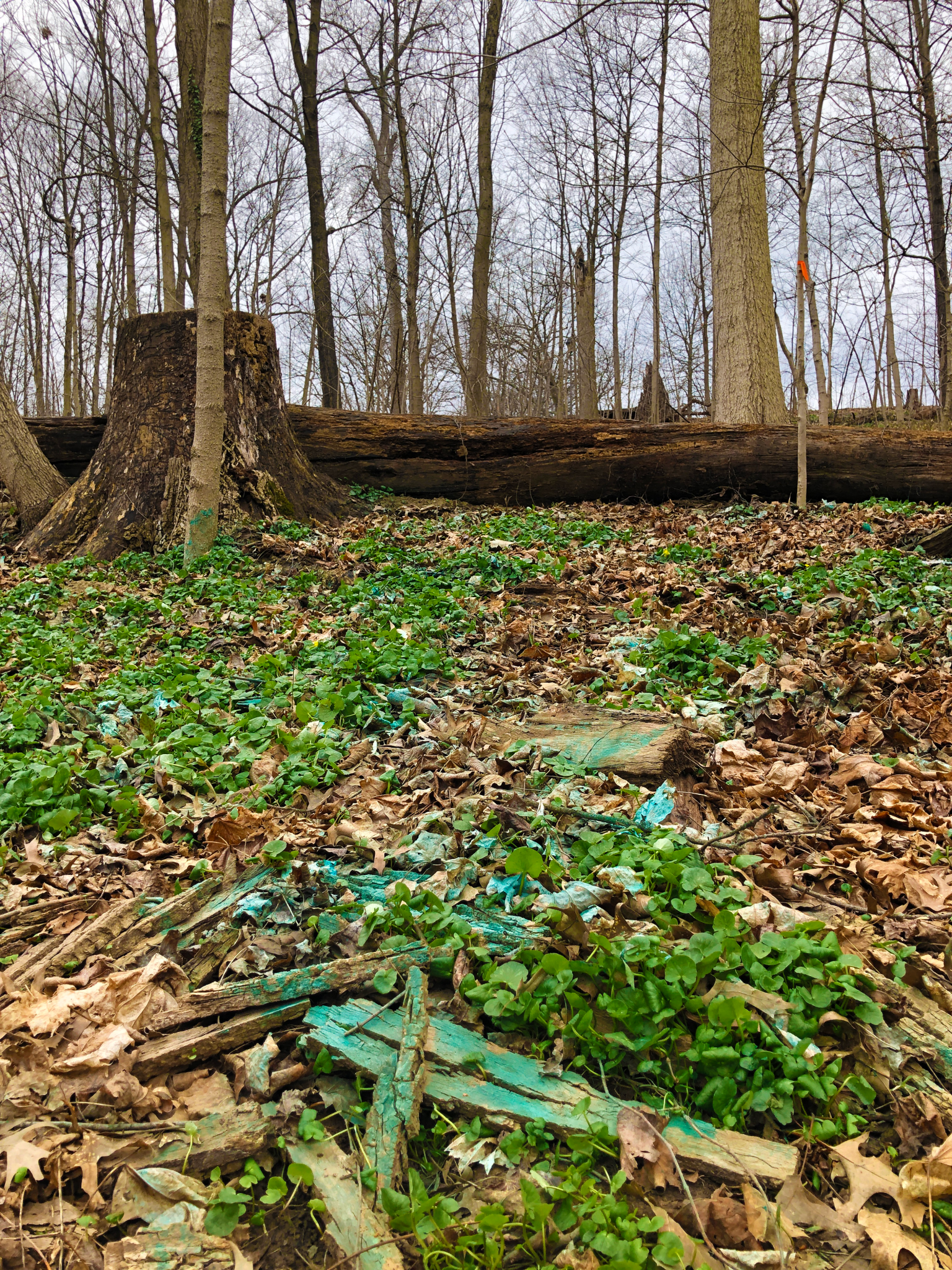"What's that blue patch?" you might ask...
- Mar 23, 2021
Have you visited Burnet Woods recently and wondered what that blue patch was in certain forested areas of the park? Cincinnati Parks staff has been coordinating with volunteers to treat lesser celandine (Ficaria verna) and winter creeper (Euonymus fortunei) in Burnet Woods. Lesser celandine is an invasive plant frequently invading our natural areas, usually around stream channels first and climbing up hillsides afterwards. Cincinnati Parks works hard to control these harmful plant species because they destroy the regenerative capacity of the forest, negatively impacting the native habitats necessary provide homes to all sorts of wildlife.
Parks staff work diligently to identify best practices for treatment that will minimize environmental impacts and potential hazard to park patrons. In this case, an approved aquatic glyphosate called “Roundup Custom” was specifically selected for this purpose because it is labeled for safe use around streams and other wet areas. The lowest, most effective herbicide concentrations are used to manage invasive species throughout the park system. For lesser celandine, Roundup Custom is being used at a 1.5% rate, (a very diluted mixture) meaning that for every gallon sprayed, there are 2 ounces of herbicide mixed into 126 ounces of water. So, for every 64 total gallons of mixture applied, only one gallon of herbicide is used.
In locations where invasive species concentration is high, it becomes necessary to treat large areas of the park. Blue indicator dye is added to the mixture so applicators can see what has been treated to avoid missing spots and minimize the total volume of herbicide applied by not overlapping. It is also there to let park users know areas that have been recently treated. Therefore, it is important to understand a few more details about efforts to keep our natural park areas safe and free from the damage caused by harmful plant species.
Potential contact is greatly reduced once the mixture dries (in about 2 hours). Foliage may remain blue for several days depending upon weather conditions. For their own safety and the health of our natural areas, dogs, pets and people are advised to always stay on marked trails and to avoid unmarked natural areas of the park. However, if you are worried about your four-legged friends unexpectedly coming into contact with this herbicide, the product label indicates this particular herbicide is considered to be relatively nontoxic to dogs and other domestic animals. Further, direct ingestion of this product or large amounts of freshly sprayed vegetation may result in temporary gastrointestinal irritation (vomiting, diarrhea, colic, etc.). If such symptoms are observed, provide the animal with plenty of fluids to prevent dehydration. Call a veterinarian if symptoms persist for more than 24 hours.
Signage explaining the blue areas and the need to perform this important natural resource management work is placed at the locations while work is occurring at a particular time. Trail closures will take place while large scale pesticide application is being applied on site. Signage will be placed in specified areas during the application process. These closures will cause minimal disruption to park-goers, as trails will only be closed for a few hours over the course of a couple weeks, a couple times per year.
Left unabated, lesser celandine and other harmful plants would destroy our natural forests as we know them. Our goal is to safely eradicate invasive species to ensure our natural areas and ecosystems remain healthy for plants, wildlife and humans to enjoy for generations to come.


